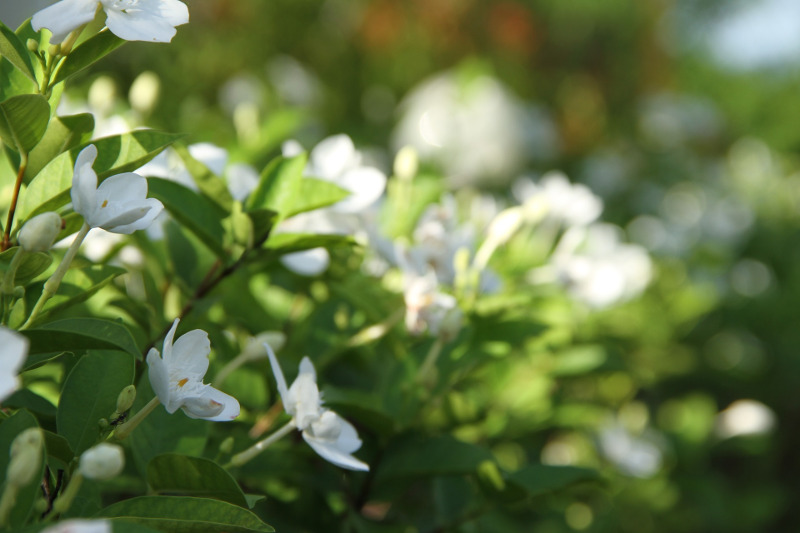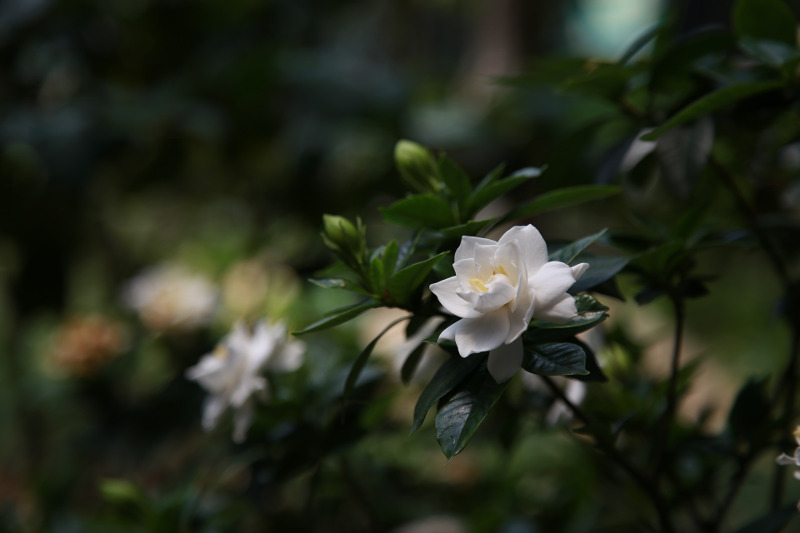If you want to add amazing fragrance and beauty to your yard, a gardenia is the perfect shrub for you. The full name of this plant group is “gardenia jasminoide.” They are an evergreen shrub with heavily scented white flowers and dark shiny green leaves. The flowers are a classic bloom that is often used in flower arranging, wedding bouquets and corsages. Plant these beautiful shrubs next to doorways, patios and under windows. The sweet scent will greet everyone that passes by.

Gardenias can be a bit tricky to plant in cooler growing zones due to the fact that they are originally tropical plants, but worth the effort. If you do live in a colder zone look for hardier varieties. You can also plant them in large containers and move into a greenhouse or garage during the winter months. They do well in large pots on decks and patios. However, they do not make good houseplants, (although some gardeners may disagree.) They often attract pests such as mites and whiteflies and require a great deal of care and feeding.
Where to Plant Gardenias
Before planting you will want to do a bit of planning and studying of your yard. Gardenias can grow in many different soil types but really prefer acidic soil. So you may want to do a soil test or purchase some pH test strips at your local garden center. Many county extension services also have soil tests available or master gardeners that help you with your local gardening needs. Amending the soil is easy once you know what you are working with. Applying compost is a good method for building up your soil and adding a bit of acid.
Good drainage is most important when looking for a spot to plant your gardenia. They do not like wet or boggy spots.
An easy test is to dig a hole, fill it with water and see how easily it drains. You will want to do this several times. If the spot is slow draining or does not drain at all you can mix in some heavy bark, sand or gravel to loosen up the area. It is much better to move spots than to try and plant your shrub in a spot with poor drainage.
Sunlight is also important, observe your spot for a few days and see how much light it receives. Gardenias can tolerate full sun but they do best when they get a break in the afternoon. Filtered sunlight is best for gardenias. This is why you will often see them planted next to buildings or under gazebos and patio covers. Once you have your spot chosen it is now time to plant.

What You Need To Plant Gardenias
Assemble all of your tools: shovels, clippers, watering cans, fertilizer, and plants. This will save you time and energy. Take the time to read the plant stake or information that came with your shrub. This step is important, as it is the final check on where you are going to place your plant. It is much better to check your spot several times than the heartache of a dying plant or having to move an established shrub the following year. Plant stakes and labels often have valuable information such as planting depth and spacing.
Gardenia Spacing
Dig a hole that is two to three times the size of your pot in diameter. The depth should be about the same height as the root ball. Planting a gardenia a little on the high side is fine but you really want the planting hole to be as wide as possible to give the roots plenty of room to stretch out and grow. Add a bit of slow release fertilizer or compost to the hole and then place your gardenia plant inside the hole. Fill in the hole with soil and build a shallow berm around the plant to help retain water as the plant roots get established.
Water deeply after planting and make sure the plant is moist for the first few weeks. You will not have to water your gardenia every day once it gets established. Make sure the soil is moist but not soggy. It is best to let the plant dry out between watering. Also if you planted your shrub during the winter months you definitely will not want to overwater as the gardenia is dormant and not actively growing, so it will require a lot less water.
When To Plant Gardenias
You can plant gardenias year round but the best time of year for new plants is in the early fall or spring. This gives them time to become established when growing conditions are milder.
Gardenias like to be fed regularly as they require a lot of nutrients to produce those gorgeous blooms. Choose a fertilizer that is designed for acid loving plants. Organic gardeners could use blood meal, fish emulsion and bone meal. Also lots of compost as this too will make the soil more acidic and nutrient rich.
The gardenia plant grows from a single trunk so they cannot be divided. However if you wish to create more plants you can take small cuttings in the spring, when the new leaves begin to appear. Simply cut a small section and then dip in a rooting hormone and place in a small container with a potting mixture that will be easy for the roots to branch out in. Then once roots are established, you can plant in your garden or yard, or leave in the container for the first few years.

Transplanting Gardenias
If you need to move your gardenia because it is just not thriving where it is planted or your yard design has changed you can easily do this. Simply dig around the base of the plant at least 12 -18 inches from the trunk. Try and remove as much of the root system with a large shovel or spade and gently ease it out of the ground. Then follow the same process for planting a new shrub that you just brought home from the nursery. With proper care, good drainage, sunlight and regular feedings your gardenia should grow and add beauty to your garden and life for many years to come.
 |
Author Janice Cox - Published 09-28-2021 |
